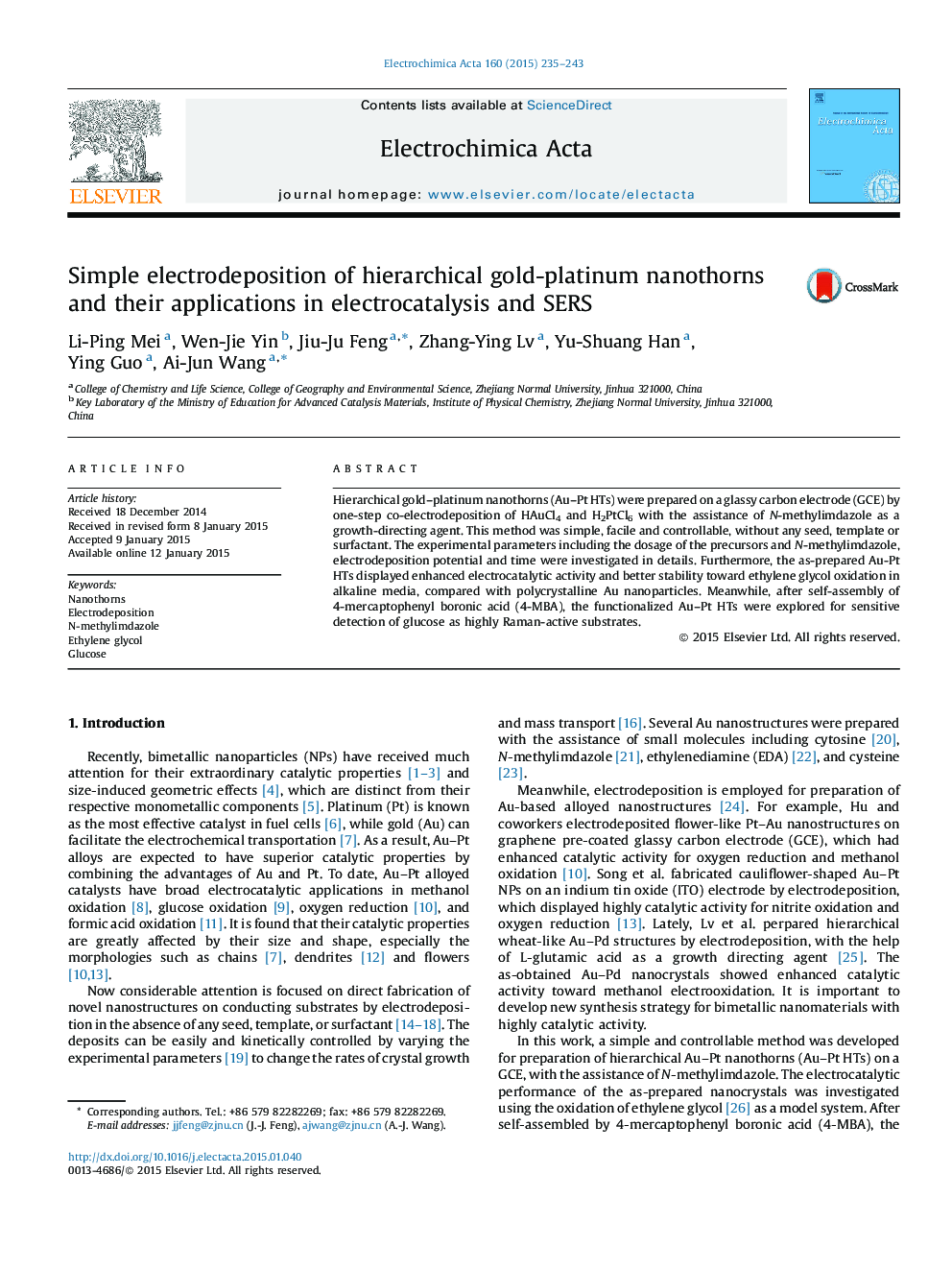| Article ID | Journal | Published Year | Pages | File Type |
|---|---|---|---|---|
| 184411 | Electrochimica Acta | 2015 | 9 Pages |
•Hierarchical Au–Pt HTs were prepared by one-step electrodeposition, using N-methylimdazole as a growth-directing agent.•This method was simple, facile and controllable, without any seed, template, or surfactant.•Au–Pt HTs displayed enhanced electrocatalytic activity and better stability for EG oxidation.•Au–Pt HTs were demonstrated as highly Raman-active substrates for glucose detection using 4-MBA as a Raman probe.
Hierarchical gold–platinum nanothorns (Au–Pt HTs) were prepared on a glassy carbon electrode (GCE) by one-step co-electrodeposition of HAuCl4 and H2PtCl6 with the assistance of N-methylimdazole as a growth-directing agent. This method was simple, facile and controllable, without any seed, template or surfactant. The experimental parameters including the dosage of the precursors and N-methylimdazole, electrodeposition potential and time were investigated in details. Furthermore, the as-prepared Au-Pt HTs displayed enhanced electrocatalytic activity and better stability toward ethylene glycol oxidation in alkaline media, compared with polycrystalline Au nanoparticles. Meanwhile, after self-assembly of 4-mercaptophenyl boronic acid (4-MBA), the functionalized Au–Pt HTs were explored for sensitive detection of glucose as highly Raman-active substrates.
Graphical abstractHerein, hierarchical Au-Pt nanothorns were prepared by one-step electrodeposition with the assistance of N-methylimdazole as a growth directing agent. The as-prepared nanocrystals showed enhanced electrocatalytic activity toward EG oxidation and highly Raman-active substrates for glucose detection, using 4-MBA as a Raman probe.Figure optionsDownload full-size imageDownload as PowerPoint slide
